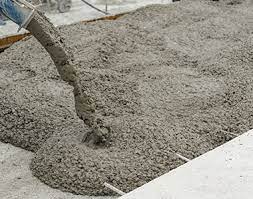How sustainable concrete is helping the cause of saving the Environment?
Sustainability is essential for any industry, and it's necessary to understand how the concrete you use can contribute to a greener world. Sustainable concrete is built with a mix of natural and artificial fibres. This blend improves durability and reduces micro cracks. It also costs less than synthetic fibres and can be locally available. It also requires less energy to produce. In addition, sustainable concrete uses fewer raw materials than standard concrete.
Sustainable concrete- Made Up of Recycled and Natural Materials
Unlike traditional concrete, sustainable concrete is made
from natural and recycled materials. Its many properties make it a powerful
tool to fight climate change and build resilient communities. The material's
remarkable properties make it an excellent choice for these purposes, and they
can help us mitigate the natural world crisis.
This makes sustainable concrete an essential part of today's
construction industry. Therefore, it is imperative to explore new ways to use
this resource responsibly.
 |
| Preparing Sustainable concrete |
The first step is
understanding how sustainable
concrete can be sourced and used more sustainably.
In many cities, recycling is essential. This is especially
true in cities. This material is abundant, cheap, locally available, and
versatile. Ultimately, it is the material of choice for sustainable
construction.
Furthermore, it is one of the most widely used synthetic
materials globally. However, it is one of the least environmentally friendly
materials. It accounts for about 5% of the global CO2 emissions.
The second step in developing sustainable concrete is increasing its production efficiency.
Using new techniques for manufacturing concrete, which is
cheaper and more efficient, can drastically increase the density of a
structure. This increases productivity and reduces costs. This material is also
better at retaining moisture and holding its shape. Moreover, it does not
compact or settles. Increasing its density can translate to cost reductions.
Lastly, eco-friendly concrete reduces waste by reducing waste. Rather than
forming giant aggregate slabs, it compacts and creates more waste than it needs
to.
The third step towards eco-friendly concrete is to improve its density.
Compared to conventional concrete, it has a higher density.
This means reducing the amount of waste and water needed for transportation.
And it can also reduce the cost of construction. It is more expensive than
conventional cement, but it's more sustainable in the long run. There are many
benefits to using eco-friendly concrete. It can be made of recycled concrete materials,
which is good for the environment and saves water.
Besides being cheaper and more efficient than conventional
concrete, sustainable concrete also reduces water and energy. A concrete mix
with lower water content is more efficient and will last longer. It can be made
with recycled materials. These materials will be reusable in the future.
Recycling the concrete will take approximately four days at room temperature.
Similarly, recycling concrete will be more economical than conventional
concrete.
The other way to reduce the carbon footprint of concrete is
to use supplementary cementitious materials. These are byproducts of other
industries that will reduce the cement used. These additional materials will
provide a better mix, but they're more expensive. But they're also more
efficient in the long run so that they'll be more cost-effective in the long
run. In addition to reducing CO2 emissions, they can also improve workability
and compressive strength, which will result in a lower price.
Currently, environmental-friendly concrete is still in its
experimental stage, but it's possible to make it stronger and more durable than
traditional concrete. This type of concrete is being tested in some areas,
including the USA, China, and India, where the process is conducted using a
ready-mix plant. A ready-mixed concrete plant can use a lot of water, and most
of the water used is discharged into the environment.
Concrete is used all over the world.
Most projects require a ready-mix plant, which uses large
amounts of water to wash and cure the materials. The contaminated water is
discharged into rivers and streams, which can harm the environment. While
concrete may be more durable, it can make other building systems more
efficient. It can also be made stronger and more energy-efficient than
traditional concrete. It's important to reduce the carbon footprint of the
entire process.



Comments
Post a Comment